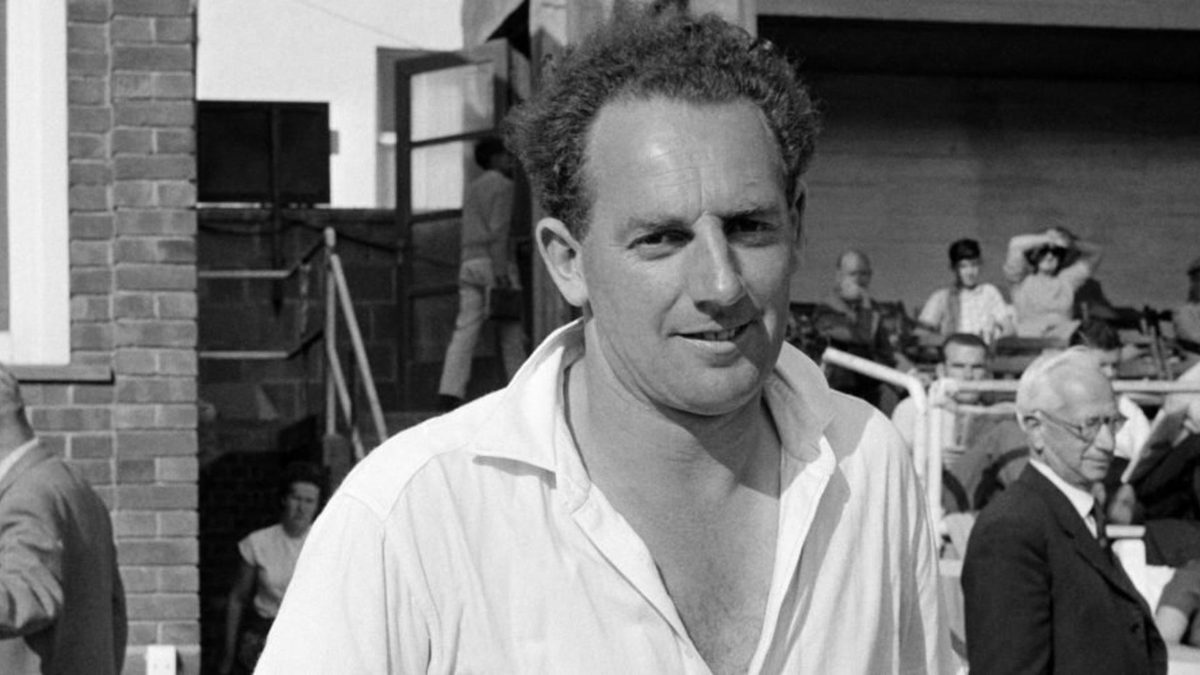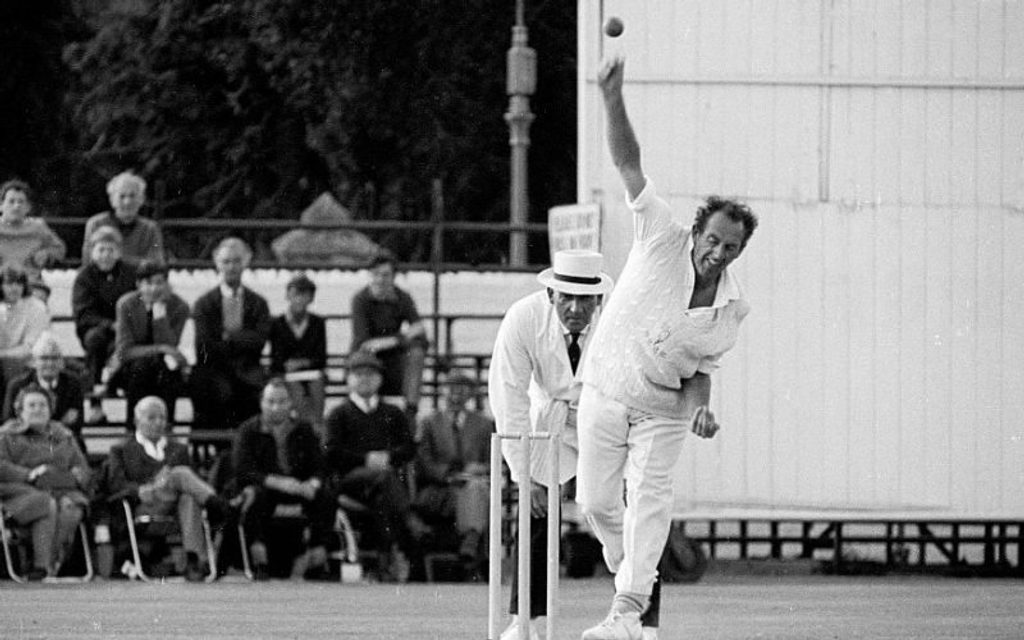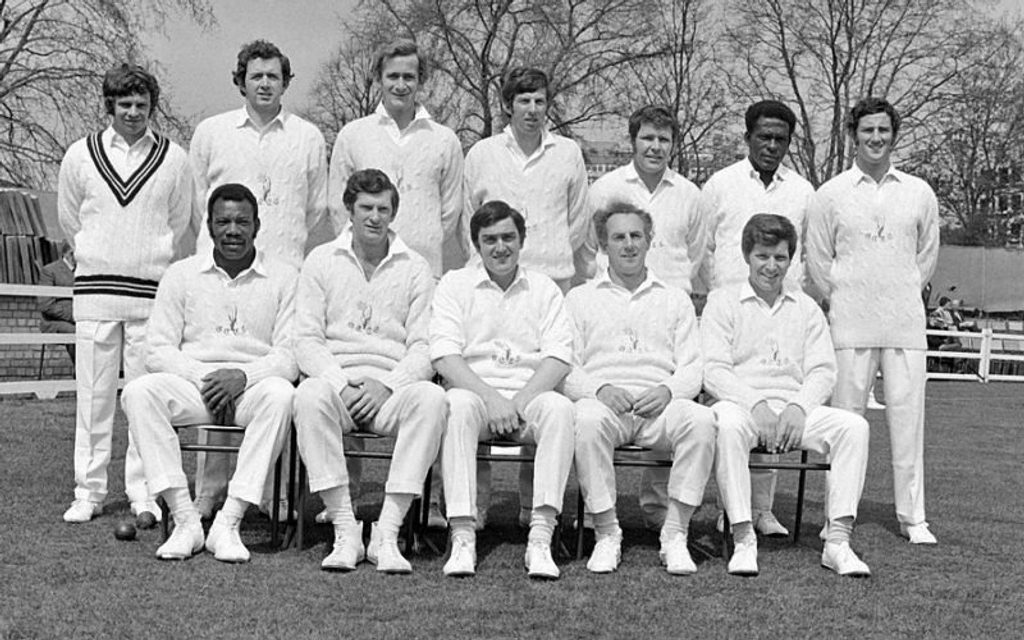
With more than 2,000 first-class wickets, Don Shepherd was one of the greatest county bowlers of all time – but the selectors never came calling. His Wisden obituary in 2018 recalled a prolific career.
Shepherd, Donald John, died on August 18, 2017, aged 90.
In the winter of 1955/56, concerned about his diminishing powers with the ball, Don Shepherd repaired to an indoor cricket school in Neath, and set about mastering a new style. The space was too cramped for his full run-up, but he laboured tirelessly on a new grip and subtly different ways to confound batsmen. When he emerged for pre-season nets, he had transformed himself into one of the greatest county bowlers of all time. The results were immediate: in the third game of the 1956 season, against mighty Surrey at Cardiff Arms Park, he took 12 wickets, bowling Peter May for a duck. By the end of the season, he was the leading first-class wicket-taker, with 177 at 15. The long winter hours at Neath had not been wasted.
Instead of the regulation seam-up with which he had begun his Glamorgan career in 1950, he now bowled off-spin and cutters at close to medium-pace. His run-up was much the same – around nine bounding strides – but his chief weapons were relentless accuracy and disguised variations of pace and length. “He treasured his action and he looked after it,” said team-mate Tony Lewis. “He had a high arm, but occasionally he would drop it slightly and get the batsmen nicking and pushing.” Formidably fit and blessed with prodigious stamina, Shepherd usually bowled more than 1,000 overs a season. Glamorgan batsman Allan Watkins recalled that he did not require instructions from captain Wilf Wooller: “Wilf only had to say, ‘Right Don, this end,’ and then he forgot about him. You just left him.”
When he retired aged 45 in 1972, Shepherd had taken 2,218 first-class wickets, the 22nd-highest of all time, and the most by anyone who never won a Test cap: the selectors seemed permanently sceptical of wickets taken on damp or sandy Welsh pitches. But Richie Benaud was among those who believed he would have thrived on the big stage. “Had he been an Australian he would have played for his country many, many times,” he said. Lewis added: “I’m sure he would have played Test cricket most successfully.” The man who seemed least concerned about the snub was Shepherd: “It never worried me. I was happy enough doing what I did.”
***
“Shep”, as he was universally known, was born in the former fishing village of Port Eynon on the Gower Peninsula. He was introduced to cricket by his grandfather, who scored for the village team. When his parents moved to Parkmill, closer to Swansea, to run the family shop, he won a scholarship to the local grammar school. He played cricket with friends on Gower’s sandy beaches, and spent hours on his own bowling at a wall, but there were only a handful of matches at school, and no formal coaching. It was not until his national service in the Fleet Air Arm that he took part in a properly organised game. His natural aptitude was such that, after playing for RAF Defford against Worcestershire Seconds and the Gentlemen of Worcestershire in 1947, he was offered a trial at New Road, which led to the chance to join the MCC groundstaff. By the time he took up his place at Lord’s in 1948, Worcestershire had allowed him to register with Glamorgan.
After a summer with Glamorgan Seconds, he made his first-class debut against Surrey at The Oval in 1950 and finished the season with 49 at 25. He passed 100 for the first time two years later but, despite career-best figures of 9-47 against Northamptonshire at Cardiff early in 1954, his performances were less productive. He grew concerned that his contract would not be renewed; during the 1955 season, he decided on a radical rethink.
 Don Shepherd in action against Hampshire in Southampton, circa 1970
Don Shepherd in action against Hampshire in Southampton, circa 1970
It was wicketkeeper Haydn Davies who first proposed the change, citing the example of former Glamorgan captain Johnnie Clay, who had switched to off-breaks after starting as a seamer. Wooller initially rejected the idea but, with the county’s slow bowling resources thin, he grudgingly let Shepherd give it a try towards the end of the season. In only his second outing since his remodelling, he took 10 in the match against Warwickshire – encouragement to complete the transformation in the winter. “I found it an easy changeover,” he said. “I had control almost straight away.” He developed a grip using the leverage of two fingers and a sharply cocked wrist, which he broke “at the last millisecond” before release. He created pressure by restricting scoring, and Wisden called him “perhaps the hardest bowler to get away that the post-war game has produced”. Lewis called him “an expert in suffocation”.
Shepherd accumulated a vast store of knowledge, and knew exactly how to adjust his length and pace to exploit any batsman’s weaknesses. Eifion Jones, one of Glamorgan’s wicketkeepers, always stood a few yards back: “He had so much variation – slower balls, quicker balls, straight balls, a variety of things up his sleeve and so accurate at all times.” He was aided and abetted by a superb close-catching ring that included the fielding talents of Peter Walker: “If the ball came to me it was usually because the batsman had lost patience and had a slog. He never bowled a bad ball that endangered his fielders.” As a tailender, Shepherd was less predictable but, against Derbyshire at Cardiff in 1961, he got to 50 inside 16 minutes, and hit off-spinner Edwin Smith for 26 in an over. Later that summer against the Australians, he reached a half-century in 11 scoring shots.
Matches against the touring teams held huge significance for Glamorgan, and Shepherd enjoyed two memorable victories over the Australians, both at his home ground of Swansea. In 1964, Bobby Simpson’s team were unbeaten when they arrived on the August Bank Holiday weekend, with patriotic fervour stoked up by the National Eisteddfod being held in Swansea. When the teams paid a visit after the first day’s play, the Australian innings was wobbling at 63 for six in reply to 197. The Glamorgan players were invited on stage to a thunderous welcome. “We were so full of hwyl that there was no way we were going to lose the match,” said Shepherd. On a tense final day, he bowled a marathon spell in sweltering heat to take five for 71 as Glamorgan won by 36 runs. “Wales beat Aussies” proclaimed the Daily Mail, but Shepherd was too exhausted to answer the crowd’s calls for a speech. Then, against the Australians in 1968 in one of his rare matches as captain, he inspired Glamorgan to a 79-run victory with a superbly judged declaration.
The following summer Glamorgan, now led by Lewis and installed at Sophia Gardens, were crowned county champions. The 42-year-old Shepherd was their leading wicket-taker, with 81 at 22, and proved an outstanding lieutenant, using the mathematical skills acquired in winters in the family shop to calculate run-rates and advise on declarations. Against Worcestershire in front of a packed house at Cardiff, he took his 2,000th wicket in the first innings, then clinched the title by having Brian Brain caught at slip in the second. Glamorgan drew their final match, against Surrey, to complete an undefeated season. “The 1969 side were possibly the greatest Glamorgan team of all time,” said Shepherd. His efforts were rewarded by being named a Wisden Cricketer of the Year.
 The Glamorgan county cricket team, circa May 1971. Don Shepherd is seated second from right
The Glamorgan county cricket team, circa May 1971. Don Shepherd is seated second from right
Any chance of Test selection had vanished. His best chance may have come and gone in the late 1950s, when the international careers of Jim Laker and Johnny Wardle ended within two years of each other. Yet the selectors turned to the spin of David Allen, John Mortimore and Ray Illingworth. There remained a feeling – confirmed to Shepherd’s biographer Douglas Miller by former chairman of selectors Doug Insole in 2004 – that his success owed much to Welsh pitches. He was, though, successful on his few overseas tours, and in Pakistan with a Commonwealth XI in 1967/68 he silenced the Multan crowd by performing the unheard-of feat of dismissing Hanif Mohammad lbw, for 19. Shepherd reached 100 wickets for the season for the 12th time in 1970, and retired two years later. He was allowed to choose his last Championship appearance, and bowed out at The Oval, scene of his first-class debut 22 years earlier. He had made a record 647 appearances for the county.
He returned to running the family business, later finding a niche as a summariser on Glamorgan matches for BBC Radio Wales. In the 1990s, he had a spell as a bowling coach for the club, becoming a mentor to Robert Croft. Lewis believes only Watkins and Gilbert Parkhouse rival Shepherd as the greatest Welsh cricketer. “But he was definitely the most essential,” he said. “You had to have him on the field.”








